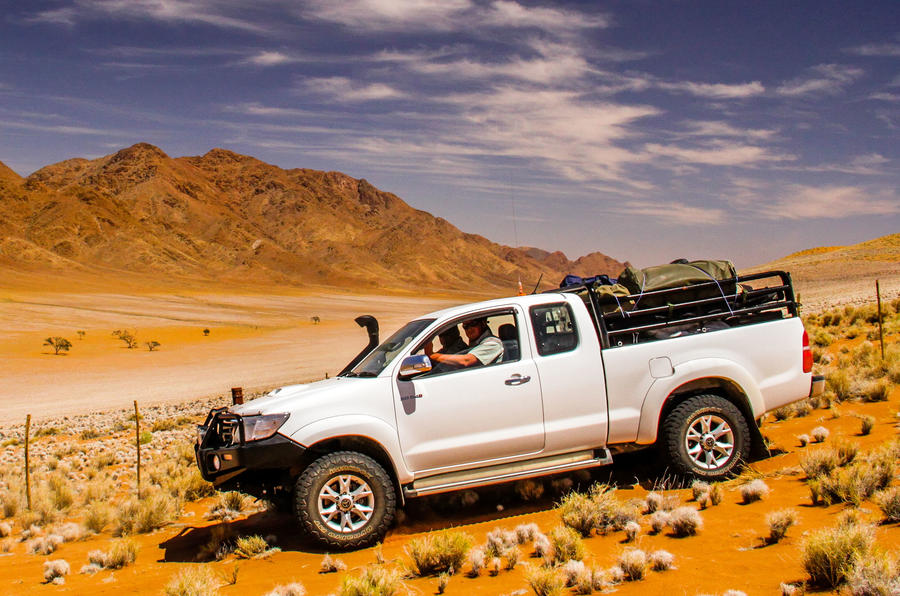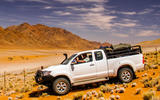Have a look at the images above and you will begin to get a sense as to why drivers in Africa need to be sure their car won’t break down.
It’s why Toyota and its Hilux have come to dominate the landscape out there. On Tuesday, you will be able to read about how the newly refreshed Hilux performs on UK roads and mud. It will be an important test to see if it can keep up with the latest pick-up trucks, like the Mitsubishi Mitsubishi L200 and Ford Ranger. But in the wilder parts of the world, they judge on different criteria.
Having spent a fair bit of time working in Southern Africa, I know it doesn’t take long to understand these different yardsticks. I met a chap in Namibia who once broke down on a road outside Swakopmund. Not in a Toyota, I hasten to add.
With no prospect of any passing traffic to rescue him (Namibia is about the size of Germany and Spain combined, yet only 2.5 million people live there), he had to think laterally – and fast. Daytime temperatures can climb to 40deg C and above.
Seeing a telegraph wire overhead, he threw rocks, branches and even his shoes at it to try to bring it down. He knew that if he broke the wire, an alarm would go off in Swakopmund and someone would come out to see what was amiss. One rescue from an engineer later and my friend lived to tell the tale.
Toyota has built up a reputation of rarely being the cause of those sort of life-or-death situations, and that’s why Africans continue to buy the Hilux in vast quantities. It’s South Africa’s best-selling car and best-selling pick-up, shifting over a quarter more than the Ranger, its nearest rival. It even outsells the Volkswagen Polo Vivo. Imagine that over here - a pick-up outselling a small hatchback. Market share still runs at over 40%, even with all the rivals that are on sale these days. In fact, if anything it’s going up.
My own experience of the car there was equally stark. I was once in the middle of Damaraland, the sort of place that makes the moon look hospitable and where we were a four-hour drive from the nearest water supply. We had two Hiluxes to ferry us all around but never even blinked about anything breaking on them. It genuinely never crossed our minds. We carried a bit of spare fuel and a spare tyre, and that was it.
It was only when we got to the water supply that we met a bloke repairing his car - a rival off-roader, let’s just say. A trackrod end had broken, but fortunately it had done it so many times before that he knew that a spare section of seatbelt webbing would tie it all back together. Those are the sort of worries you can do without.

















Add your comment